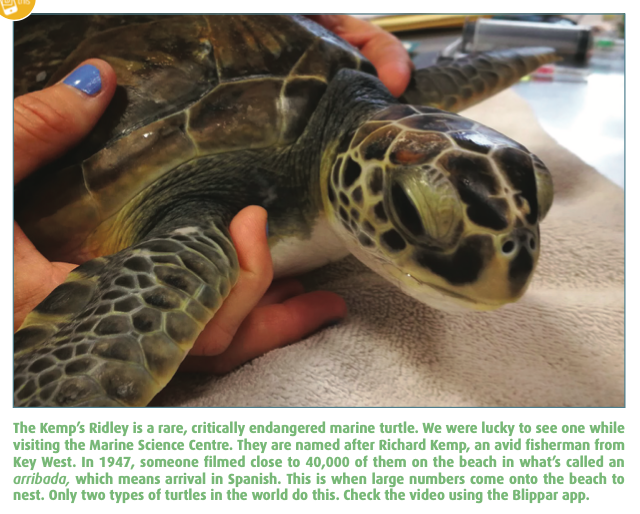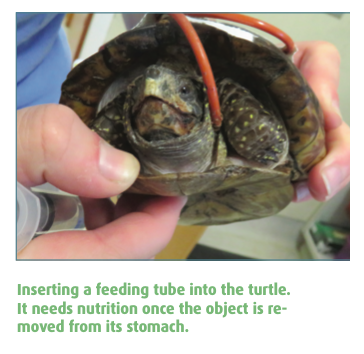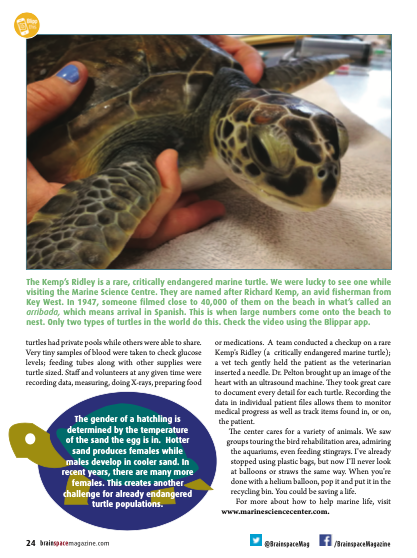
BY ELIZABETH MACCOLL HUSS
While on vacation is Florida, I spotted something that had washed up on the beach. Curious, I went to check it out. I was surprised and concerned when it turned out to be a sea turtle.
Just the day before, I had visited the Marine Science Center in Ponce Inlet. So, I knew just what to do: tell a lifeguard or contact the Florida Fish and Wildlife Conservation Commission. If a turtle needs to be saved in the Daytona Beach area, it will likely end up in the care of the Marine Science Center.
Odds are, the turtle might have been one of their previous patients. The center could be tracking it just like they do with other turtles that have been released back into their natural habitat. Since opening in 2002, the center has saved thousands of turtles.
Melissa Ranly, a biologist and manager of the turtle hospital at the Marine Science Center gave us a behind-the-scenes tour. “What can we do to help turtles?” I asked Melissa. “Helium balloons are terrible,” she told us. “So many people use balloons and don’t think twice about releasing them into the sky.” Often, the deflated balloons end up on water and this shiny garbage attracts marine life such as turtles. I learned that drinking straws are also a deadly problem for marine life. Balloons and straws commonly end up inside a turtle’s stomach or intestines.
It’s an epidemic problem that many people aren’t even aware of. The turtle can starve, or become very sick and suffer a long and painful death. Hundreds of turtles are brought to the center every year. Sadly, they can only save approximately half of them.


Research is a critical part of what the Marine Science Center does
Dr. Craig Pelton smiled as he recalled one patient named Tabasco. When he arrived, Tabasco couldn’t even lift his head. It seemed hopeless. It took a lot of work, but as months passed, he started to gain strength and surprised everyone with his recovery. “Their heartbeat gets so low,” Dr. Pelton told us. “Tabasco’s got down to four beats per minute.”
In some ways, the center was similar to a human hospital. Instead of hospital beds, there were small pools; some turtles had private pools while others were able to share.
Very tiny samples of blood were taken to check glucose levels; feeding tubes along with other supplies were turtle sized. Staff and volunteers at any given time were recording data, measuring, doing X-rays, preparing food or medications. A team conducted a checkup on a rare Kemp’s Ridley (a critically endangered marine turtle); a vet tech gently held the patient as the veterinarian inserted a needle. Dr. Pelton brought up an image of the heart with an ultrasound machine. They took great care to document every detail for each turtle. Recording the data in individual patient files allow them to monitor medical progress as well as track items found in, or on, the patient.
The center cares for a variety of animals. We saw groups touring the bird rehabilitation are, admiring aquariums, even feeding stingrays. I’ve already stopped using plastic bags, nut now I’ll never look at a balloon or straw the same way. When you’re done with a helium balloon, pop it and put it in the recycling bin. You could be saving a life.
For more information on how to help marine life, visit www.marinesciencecenter.com



